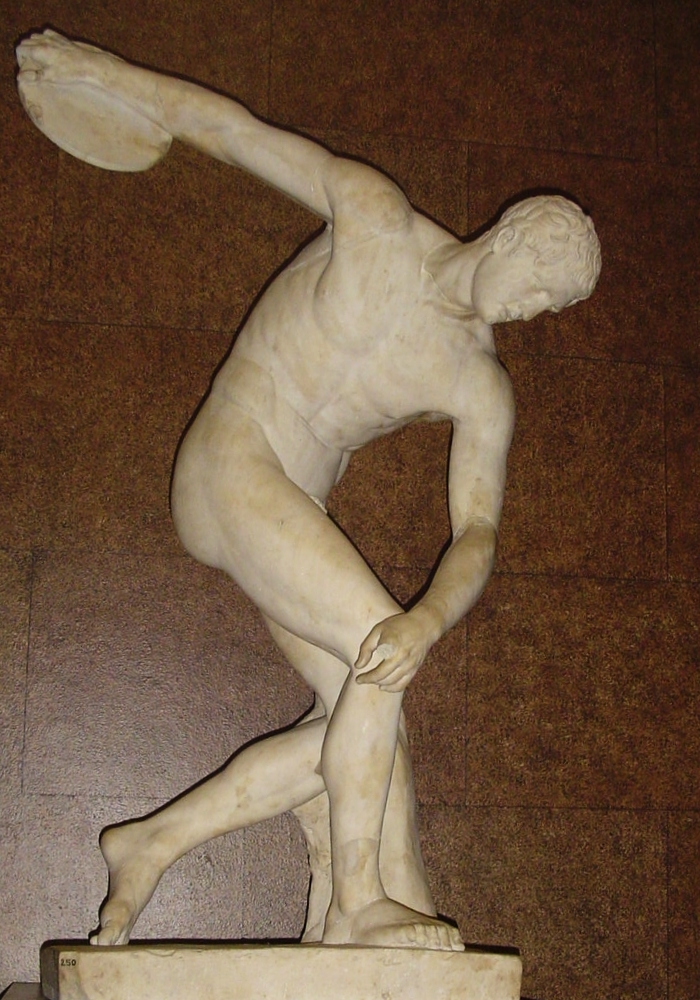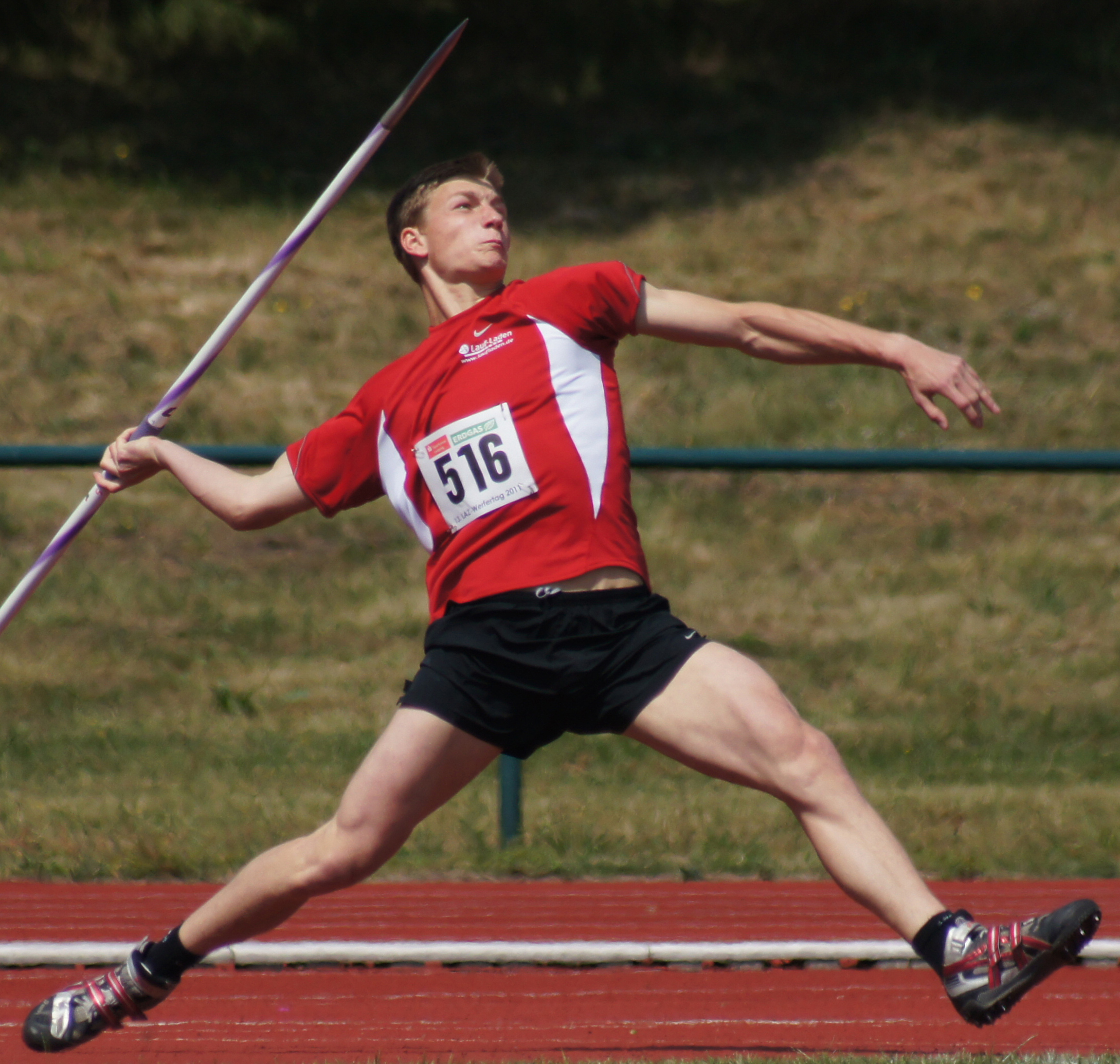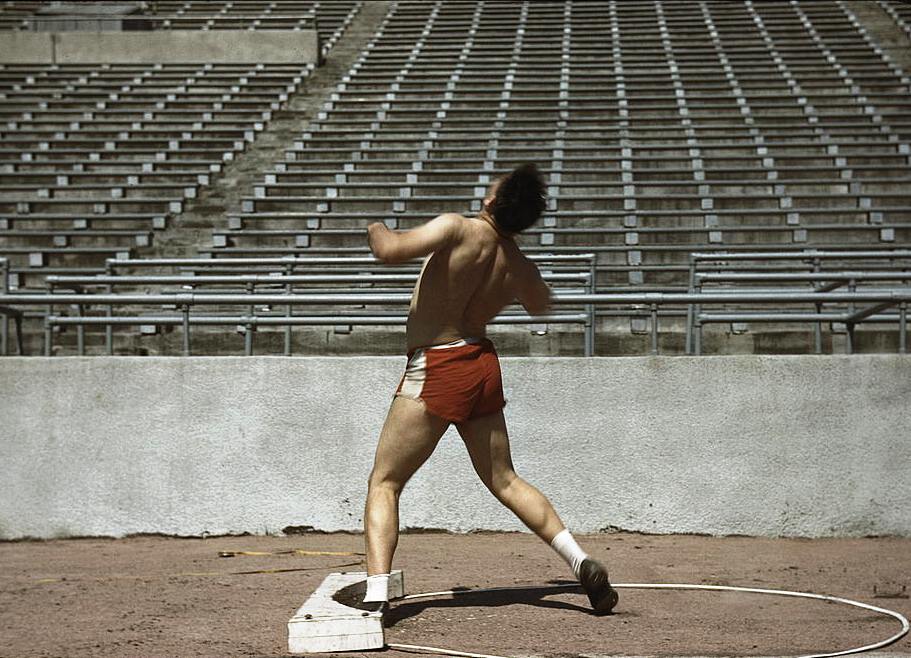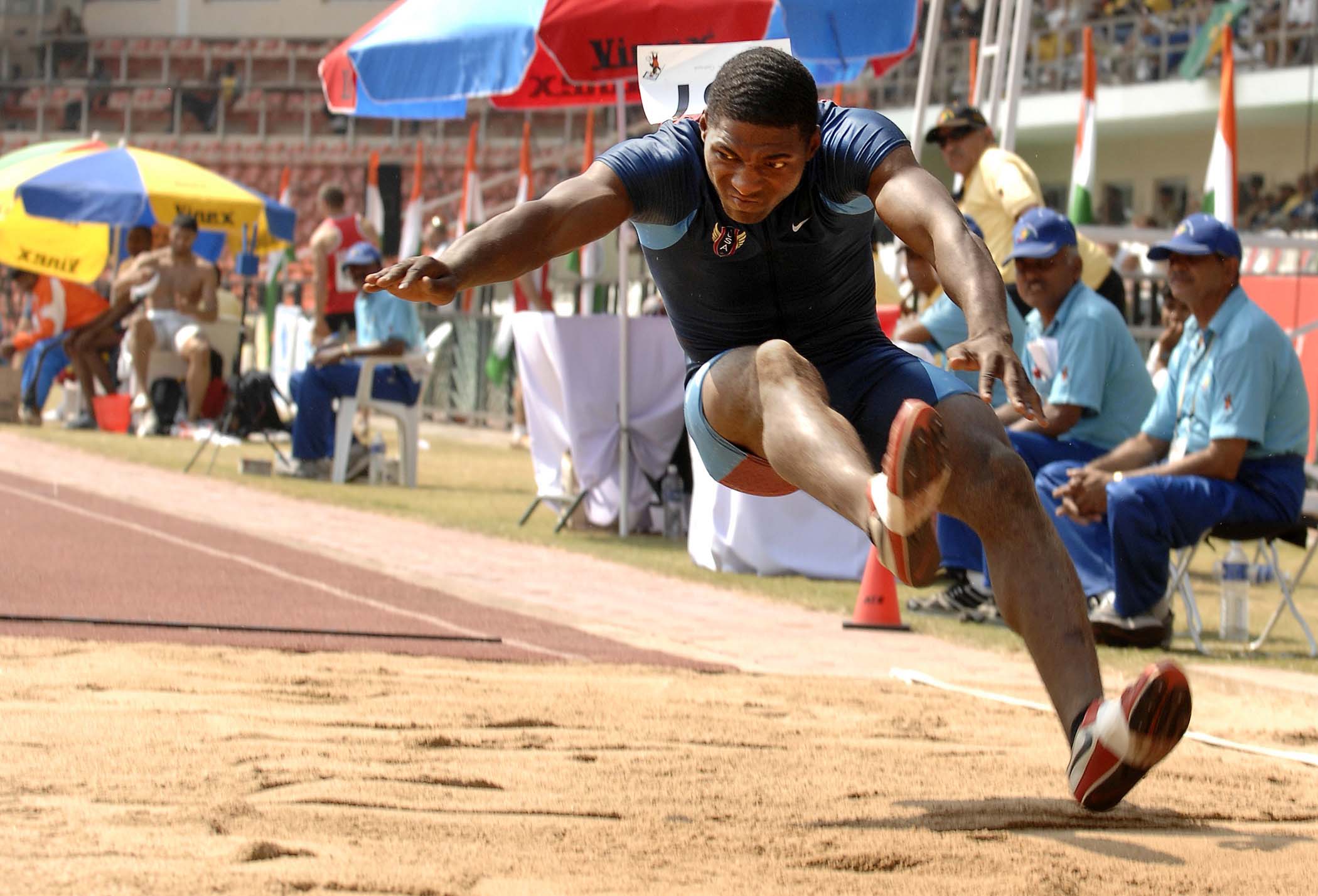|
Kamila Chudzik
Kamila Chudzik (born 12 September 1986 in Kielce) is a retired Polish heptathlete. She won a bronze medal at the Berlin World Championship in August 2009. That success was followed by a series of injuries which effectively ended her career. She officially retired in 2015. Competition record Personal bests Outdoor *200 metres – 24.33 (-0.2 m/s) (Berlin 2009) *800 metres – 2:17.41 (Zielona Góra 2008) *100 metres hurdles – 13.46 (+0.8 m/s) (Zielona Góra 2008) * High jump – 1.81 m (Toruń 2007) *Long jump – 6.55 m (+1.1 m/s) (Bydgoszcz 2009) * Shot put – 15.10 m (Berlin 2009) *Javelin throw – 55.15 m (Zielona Góra 2008) * Heptathlon – 6494 pts (Zielona Góra 2008) Indoor *800 metres – 2:20.85 (Spała 2008) * 60 metres hurdles – 8.43 (Turin 2009) * High jump – 1.71 m (Turin 2009) *Long jump The long jump is a track and field event in which athletes combine speed, strength and agility in an attempt to leap as far as possible fro ... [...More Info...] [...Related Items...] OR: [Wikipedia] [Google] [Baidu] |
Athletics (sport)
Athletics is a group of sporting events that involves competitive running, jumping, throwing, and walking. The most common types of athletics competitions are track and field, road running, cross country running, and racewalking. The results of racing events are decided by finishing position (or time, where measured), while the jumps and throws are won by the athlete that achieves the highest or furthest measurement from a series of attempts. The simplicity of the competitions, and the lack of a need for expensive equipment, makes athletics one of the most common types of sports in the world. Athletics is mostly an individual sport, with the exception of relay races and competitions which combine athletes' performances for a team score, such as cross country. Organized athletics are traced back to the Ancient Olympic Games from 776 BC. The rules and format of the modern events in athletics were defined in Western Europe and North America in the 19th and early 20th century, an ... [...More Info...] [...Related Items...] OR: [Wikipedia] [Google] [Baidu] |
2009 European Athletics Indoor Championships – Women's Pentathlon was held on March 6.
The Women's pentathlon event at the 2009 European Athletics Indoor Championships The 2009 European Athletics Indoor Championships was held in Turin, Italy, from Friday, 6 March to Sunday, 8 March 2009. The championships took place at the Oval Lingotto indoor arena Medalists Results References Results {{DEFAULTSORT:2009 European Athletics Indoor Championships - Women's pentathlon [...More Info...] [...Related Items...] OR: [Wikipedia] [Google] [Baidu] |
Cross Of Merit (Poland)
The Cross of Merit () is a Polish civil state decoration established on 23 June 1923, to recognize services to the state. History At the time of its establishment in 1923, the Cross of Merit was the highest civilian award in Poland. It was awarded to citizens who went beyond the call of duty in their work for the country and society as a whole. May be awarded twice in each grade to the same person. File:Gold Cross of Merit (obv) (People's Republic Issue).jpg, Gold Cross of Merit issued by the People's Republic File:Silver Cross of Merit (obv) (People's Republic Issue).jpg, Silver Cross of Merit issued by the People's Republic The Order The Order has three grades: Recipients Gold Cross of Merit * Ewa Hojna, 13 May 2022, Director of Polish School Cultural Association (ACEP), Spain * Jan-Krzysztof Duda, 2021, chess grandmaster * Wanda Paulina Gluszek, 2016, political activist, poet, Chicago, Illinois * Michał Korwin-Szymanowski, also known as Michel Korwin, 2015, Mo ... [...More Info...] [...Related Items...] OR: [Wikipedia] [Google] [Baidu] |
Pentathlon
A pentathlon is a contest featuring five events. The name is derived from Greek: combining the words ''pente'' (five) and -''athlon'' (competition) ( gr, πένταθλον). The first pentathlon was documented in Ancient Greece and was part of the Ancient Olympic Games. Five events were contested over one day for the Ancient Olympic pentathlon, starting with the long jump, javelin throwing, and discus throwing, followed by the '' stadion'' (a short foot race) and wrestling. Pentathletes were considered to be among the most skilled athletes, and their training was often part of military service—each of the five events in the pentathlon was thought to be useful in war or battle. With the revival of the Olympic Games in the modern era, the pentathlon returned in two formats. The athletics pentathlon was a modern variation on the original events, with a competition over five track and field events. The modern pentathlon, invented by Pierre de Coubertin (father of the Modern Olympic ... [...More Info...] [...Related Items...] OR: [Wikipedia] [Google] [Baidu] |
60 Metres Hurdles
60 metres hurdles is a distance in hurdling which is generally run in indoor competitions. It is equivalent with the first 5 hurdles of a standard outdoor hurdle race. The current women's and men's world records are 7.68 seconds ( Susanna Kallur) and 7.29 seconds (Grant Holloway Stanley Grant Holloway (born November 19, 1997) is an American hurdler and sprinter. He is the 2019 and 2022 world champion in the 110 meters hurdles, 2020 Olympic silver medalist in the same event, and current world record holder in the indo ...), respectively. Area records ''Updated February 2021.'' All-time top 25 ''Indoor results only'' Men *Updated June 2022. Women *Updated June 2022. World Indoor Championships medalists Men Medal table Women * Known as the ''World Indoor Games'' Medal table Season's bests Men Women Notes References External linksIAAF all-time best, men's [...More Info...] [...Related Items...] OR: [Wikipedia] [Google] [Baidu] |
Heptathlon
A heptathlon is a track and field combined events contest made up of seven events. The name derives from the Greek επτά (hepta, meaning "seven") and ἄθλος (áthlos, or ἄθλον, áthlon, meaning "competition"). A competitor in a heptathlon is referred to as a heptathlete. There are two heptathlons – the men's and the women's heptathlon – composed of different events. The men's heptathlon is older and is held indoors, while the women's is held outdoors and was introduced in the 1980s, first appearing in the Olympics in 1984. Women's heptathlon Women's heptathlon is the combined event for women contested in the athletics programme of the Olympics and at the World Athletics Championships. The World Athletics Combined Events Tour determines a yearly women's heptathlon champion. The women's outdoor heptathlon consists of the following events, with the first four contested on the first day, and the remaining three on day two: * 100 metres hurdles * High jump * Sho ... [...More Info...] [...Related Items...] OR: [Wikipedia] [Google] [Baidu] |
Javelin Throw
The javelin throw is a track and field event where the javelin, a spear about in length, is thrown. The javelin thrower gains momentum by running within a predetermined area. Javelin throwing is an event of both the men's decathlon and the women's heptathlon. History The javelin throw was added to the Ancient Olympic Games as part of the pentathlon in 708 BC. It included two events, one for distance and the other for accuracy in hitting a target. The javelin was thrown with the aid of a thong ('' ankyle'' in Greek) that was wound around the middle of the shaft. Athletes held the javelin by the ''ankyle'', and when they released the shaft, the unwinding of the thong gave the javelin a spiral trajectory. Throwing javelin-like poles into targets was revived in Germany and Sweden in the early 1870s. In Sweden, these poles developed into the modern javelin, and throwing them for distance became a common event there and in Finland in the 1880s. The rules continued to ... [...More Info...] [...Related Items...] OR: [Wikipedia] [Google] [Baidu] |
Shot Put
The shot put is a track and field event involving "putting" (throwing) a heavy spherical ball—the ''shot''—as far as possible. The shot put competition for men has been a part of the modern Olympics since their revival in 1896, and women's competition began in 1948. History Homer mentions competitions of rock throwing by soldiers during the Siege of Troy but there is no record of any dead weights being thrown in Greek competitions. The first evidence for stone- or weight-throwing events were in the Scottish Highlands, and date back to approximately the first century. In the 16th century King Henry VIII was noted for his prowess in court competitions of weight and hammer throwing. The first events resembling the modern shot put likely occurred in the Middle Ages when soldiers held competitions in which they hurled cannonballs. Shot put competitions were first recorded in early 19th century Scotland, and were a part of the British Amateur Championships beginning in 1866. ... [...More Info...] [...Related Items...] OR: [Wikipedia] [Google] [Baidu] |
Long Jump
The long jump is a track and field event in which athletes combine speed, strength and agility in an attempt to leap as far as possible from a takeoff point. Along with the triple jump, the two events that measure jumping for distance as a group are referred to as the "horizontal jumps". This event has a history in the ancient Olympic Games and has been a modern Olympic event for men since the first Olympics in 1896 and for women since 1948. Rules At the elite level, competitors run down a runway (usually coated with the same rubberized surface as running tracks, crumb rubber or vulcanized rubber, known generally as an all-weather track) and jump as far as they can from a wooden or synthetic board, 20 centimetres or 8 inches wide, that is built flush with the runway, into a pit filled with soft damp sand. If the competitor starts the leap with any part of the foot past the foul line, the jump is declared a foul and no distance is recorded. A layer of plasticine is ... [...More Info...] [...Related Items...] OR: [Wikipedia] [Google] [Baidu] |
High Jump
The high jump is a track and field event in which competitors must jump unaided over a horizontal bar placed at measured heights without dislodging it. In its modern, most-practiced format, a bar is placed between two standards with a crash mat for landing. Since ancient times, competitors have introduced increasingly effective techniques to arrive at the current form, and the current universally preferred method is the Fosbury Flop, in which athletes run towards the bar and leap head first with their back to the bar. The discipline is, alongside the pole vault, one of two vertical clearance events in the Olympic athletics program. It is contested at the World Championships in Athletics and the World Athletics Indoor Championships, and is a common occurrence at track and field meets. The high jump was among the first events deemed acceptable for women, having been held at the 1928 Olympic Games. Javier Sotomayor (Cuba) is the current men's record holder with a jump of set in 1 ... [...More Info...] [...Related Items...] OR: [Wikipedia] [Google] [Baidu] |
100 Metres Hurdles
The 100 metres hurdles, or 100-meter hurdles, is a track and field event run mainly by women (the male counterpart is the 110 metres hurdles). For the race, ten Hurdling, hurdles of a height of are placed along a straight course of . The first hurdle is placed after a run-up of 13 metres from the starting line. The next 9 hurdles are set at a distance of 8.5 metres from each other, and the home stretch from the last hurdle to the finish line is 10.5 metres long. The hurdles are set up so that they will fall over if bumped into by the runner, but weighted so this is disadvantageous. Fallen hurdles do not count against runners provided that they do not run into them on purpose. Like the 100 metres sprint, the 100 m hurdles begins with athletes in starting blocks. The fastest 100 m hurdlers run the distance in a time of around 12.5 seconds. The world record set by Oluwatobiloba Amusan, Tobi Amusan stands at 12.12 seconds. History The race started back in the 1830s in England wher ... [...More Info...] [...Related Items...] OR: [Wikipedia] [Google] [Baidu] |


.jpg)


